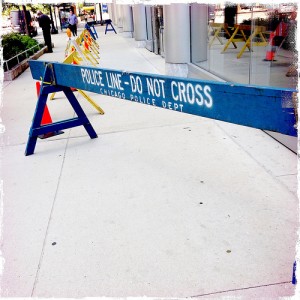26 Jun The Supreme Court Strikes Down Buffer Zone Law
 A local government can create a 35-foot buffer zone to restrict speech on a public street only if it has first made a serious effort to address the issue in other ways.
A local government can create a 35-foot buffer zone to restrict speech on a public street only if it has first made a serious effort to address the issue in other ways.
That’s the lesson of McCullen v. Coakley, the Supreme-Court decision today that strikes down a Massachusetts statute that makes it a crime to knowingly stand on a public way or sidewalk within 35 feet of a location where abortions are performed.
Although the Court found that the law is content-neutral—and therefore not subject to strict scrutiny—the Court ruled that the Commonwealth had “too readily foregone options” that would not substantially burden speech.
What are those options?
The Court said that the following measures “could in principle” pass muster:
- Prohibit obstruction of the clinic. Another provision of the Massachusetts law subjects to criminal punishment “[a]ny person who knowlingly obstructs, detains, hinders, impedes or blocks another person’s entry to or exit from a reproductive health care facility.”
- Prevent interference and harassment. The Freedom of Access to Clinic Entrances Act of 1994 and other state and local provisions bar interfering with or harassing persons that leave clinics.
- Bar other obstructions in the streets. A Worcester ordinance prevents a person from placing any obstruction in a street that obstructs passage, and a Boston ordinance prohibits soliciting in streets.
- Rely on other criminal statutes. Governments can continue to rely on “generic criminal statutes forbidding assault, breach of the peace, trespass, vandalism, and the like.”
The Court stressed that a superior approach is for the government to obtain an injunction that “focuses on the precise individuals and the precise conduct causing a particular problem.” Because the law here “categorically excludes” persons from the buffer zones, in the Court’s view, it “unnecessarily sweep[s] in innocent individuals and their speech.”
As Kevin Russell notes, the Court did not indicate that simply making the buffer zone smaller would be sufficient.
[Update: I cleaned up some language in this post.]
Image courtesy of Flickr by Seth Anderson (creative commons license, no changes made).



